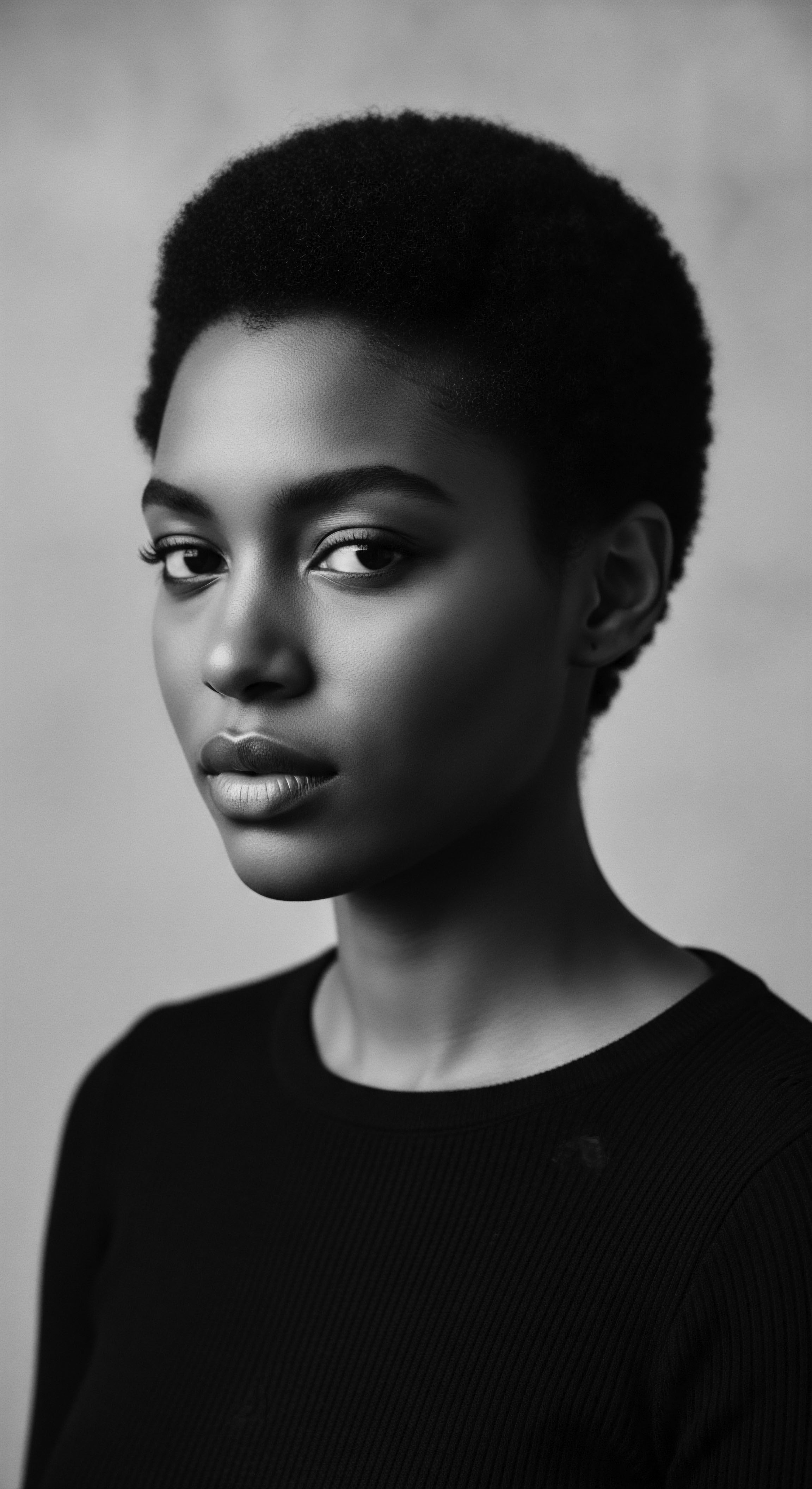
Fundamentals
The Malagasy Braiding, a distinctive form of hair artistry, signifies much more than mere aesthetic adornment; it serves as a profound expression of identity, communal connection, and historical lineage for the people of Madagascar. This practice, deeply woven into the fabric of Malagasy heritage, transforms hair into a canvas for storytelling, where each pattern and style communicates information about an individual’s age, tribal affiliation, marital status, and even their aspirations. The meaning embedded within these braided creations resonates with the rich cultural tapestry of the island, a place where African and Southeast Asian influences have converged over centuries, giving rise to unique traditions.

The Language of Strands
Understanding Malagasy Braiding requires an appreciation for its communicative capacity. It is a visual language, where a person’s life journey and social standing find articulation in their coiffure. For instance, specific styles traditionally identify young, unmarried women, while others are reserved for married women or mothers, signifying their essential role within the community.
This direct link between hairstyle and social categorization underscores the braids’ fundamental significance in daily life and ceremonial contexts across various Malagasy ethnic groups. The hands that meticulously craft these styles are not just shaping hair; they are preserving and relaying generations of shared understanding and cultural memory.
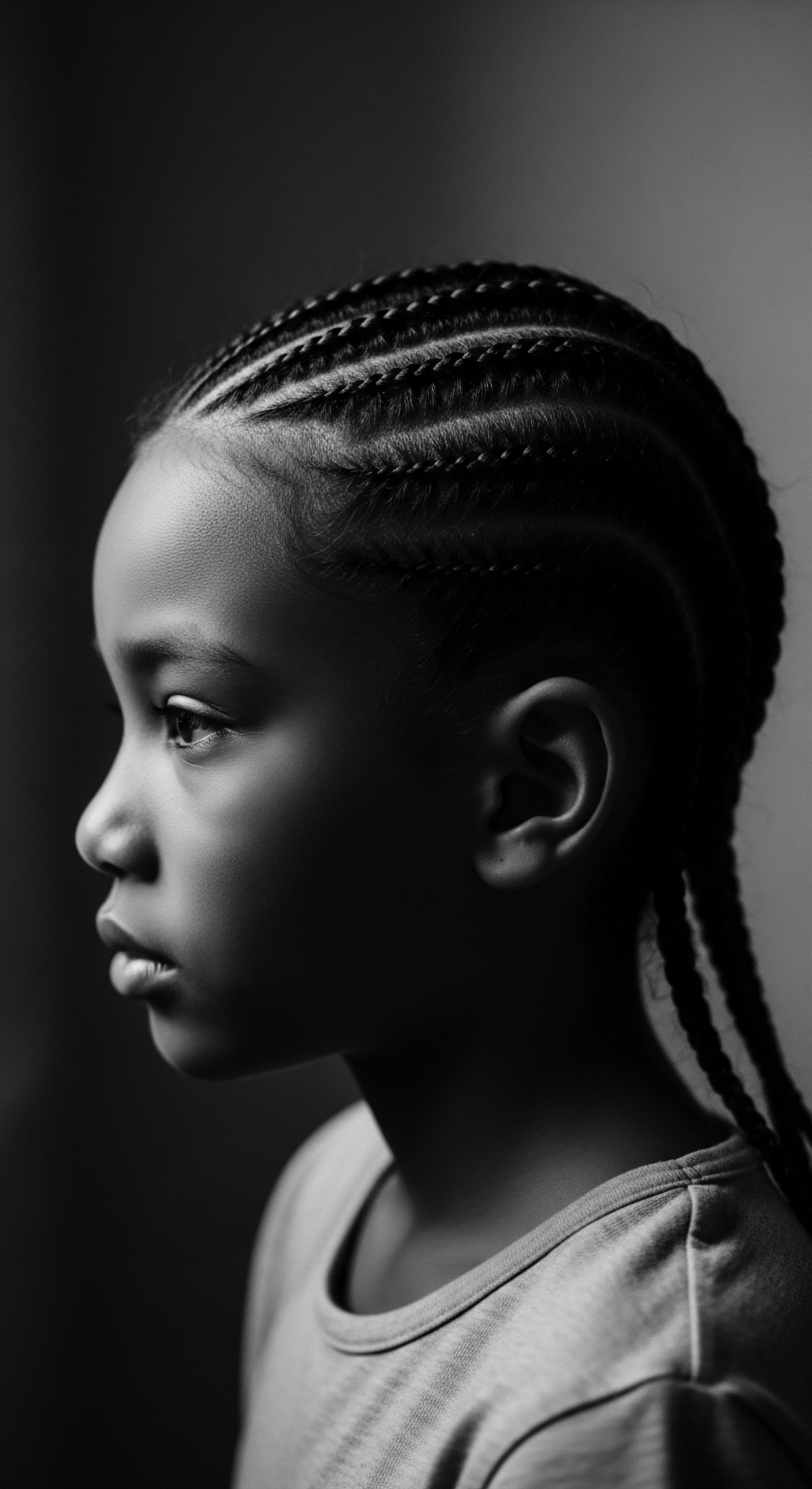
A Legacy of Coiffure
The historical roots of Malagasy Braiding extend deeply into the island’s past. Before the widespread adoption of external adornments, braided hair was a primary means for Malagasy women to express their charm and individuality. This practice persisted, with variations, across different tribes, each holding pride in the artistic presentation of their hair.
The deliberate shaping of hair for ceremonies, daily life, and even periods of mourning reflects a continuity of custom that has endured through time, offering glimpses into a deeply cherished ancestral wisdom. The meaning of these traditional forms of expression continues to evolve, yet their core connection to heritage remains a constant.
Malagasy Braiding functions as a living archive, where each pattern carries a historical weight and communicates deeply held cultural meanings.

Intermediate
Moving beyond a foundational understanding, the Malagasy Braiding emerges as a sophisticated system of cultural representation, its meaning intricately layered within the diverse experiences of textured hair heritage. The island of Madagascar itself, a unique crossroads of African and Austronesian ancestries, possesses a hair culture that reflects this profound intermingling. The distinct hair textures found across its many ethnic groups—from the straight, fine hair characteristic of some Merina individuals to the curly hair often seen among the Bara and Sakalava—each find their place within the expansive world of Malagasy braiding traditions. This diversity highlights how specific hair types historically influenced the development and adaptation of braiding techniques, giving rise to a wide array of styles with culturally significant designations.

The Artistry of Identity
Within Malagasy communities, braided hairstyles are not merely decorative but serve as a powerful indicator of one’s place within the societal structure. Each style carries a specific cultural meaning, marking transitions, affiliations, and even life events. For instance, among the Betsileo, braids have historically acted as a non-verbal language for young people navigating courtship, indicating marital status or intentions without a single uttered word.
This practice underscores a societal understanding where hair is a dynamic medium for expressing personal and collective narratives, intertwining individual identity with shared heritage. The meaning of these specific arrangements, passed down through generations, reinforces community bonds and a collective memory.
Consider the “Mitsangana fa Andeha” braid, literally translating to “Rise, let’s go,” a specific hairstyle symbolizing the transition from an unmarried young woman to a wife, embodying commitment and the promise of enduring affection. Such examples illustrate how braided structures are imbued with significant social and emotional weight, reflecting the deep cultural value placed upon these coiffures.

Hair as a Historical Marker ❉ A Case Study in Resistance
The connection between Malagasy braiding and broader historical struggles, particularly those related to Black and mixed-hair experiences, finds a poignant reflection in the practice of hair as a form of resistance. During periods of oppression, including the dark era of colonization, hair became a silent, yet potent, emblem of defiance and a repository of essential information. While direct Malagasy accounts of using braids to conceal escape routes are less commonly detailed in readily accessible historical texts compared to narratives from the Americas, the broader context of African diasporic hair traditions offers a compelling parallel. For example, during the enslavement period in the Americas, some enslaved African women would strategically braid maps into their hair, concealing rice grains and seeds within the intricate patterns as a means of survival and a symbolic link to the ancestral lands they were forced to abandon (Kollar, n.d.).
This powerful historical example, though not originating directly from Madagascar, illuminates the universal ingenuity of oppressed peoples who found ways to encode messages and practical resources within their hairstyles. It provides a lens through which to appreciate the unspoken resistance that might have also been present in Malagasy hair traditions, even if less documented in direct accounts of escape. The enduring practice of hair braiding across diverse African and Afro-diasporic communities is a testament to the resilience of cultural expression against the forces of erasure. This shared thread of ingenuity, where hair becomes a silent witness and a tool for survival, connects the Malagasy experience to the wider narrative of textured hair heritage globally.
- Tanavoho ❉ This traditional Sakalava women’s hairstyle, often worn in northern Madagascar, is a crown braid with significant volume. It stands as a symbol of beauty, femininity, and tradition, typically worn during special occasions such as weddings or festivals.
- Randra-Madinika ❉ Found among various groups, including the Betsileo, this style involves small, intricate braids that may be part of family traditions for ceremonies, like circumcision.
- Bango ❉ This particular style, along with “Kotraka,” signals a young woman’s transition into adulthood within some Malagasy communities.
| Traditional Meaning Symbolizes social status, marital status, and age. |
| Contemporary Perception (Urban Madagascar & Diaspora) Appreciated for aesthetic value, cultural pride, and fashion. |
| Traditional Meaning Communicates ethnic origin and tribal affiliation. |
| Contemporary Perception (Urban Madagascar & Diaspora) A conscious connection to heritage, often amidst influences towards straightened hair. |
| Traditional Meaning Represents community bonds and unity, often performed communally. |
| Contemporary Perception (Urban Madagascar & Diaspora) Seen as a versatile protective style that honors ancestral practices. |
| Traditional Meaning Indicates specific life events, such as mourning or circumcision. |
| Contemporary Perception (Urban Madagascar & Diaspora) Revitalized as a statement of identity and a celebration of natural textured hair. |
| Traditional Meaning The continuity of Malagasy braiding demonstrates a living heritage, adapting to contemporary contexts while retaining its profound cultural significance. |
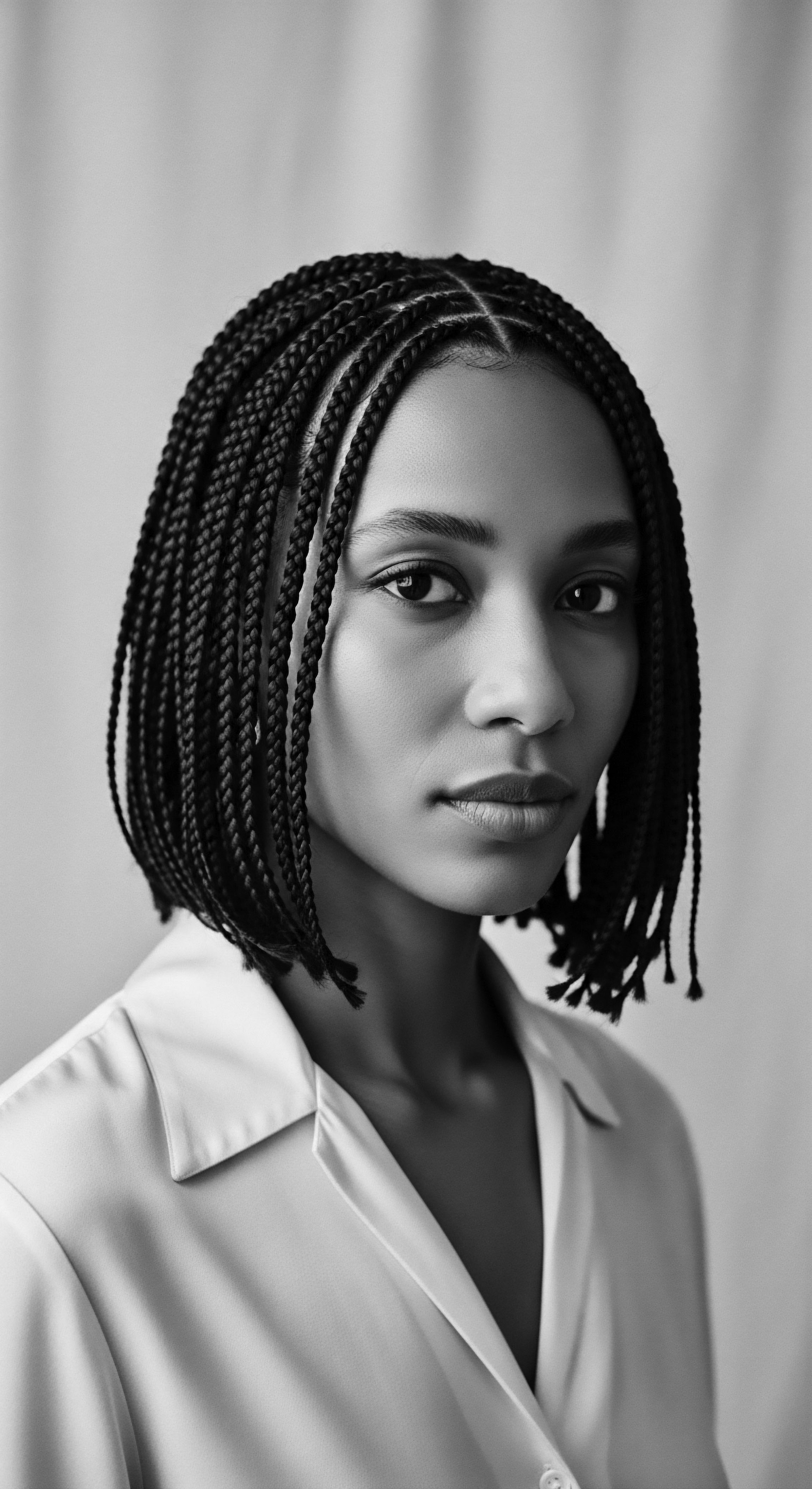
Academic
The Malagasy Braiding, from an academic perspective, represents a rich semiotic system, a complex interplay of material culture, social anthropology, and ethnobotanical knowledge, deeply rooted in the island’s unique bio-cultural heritage. Its systematic study offers significant insights into the non-verbal communication of identity and social structure within Malagasy communities, as well as the enduring resilience of ancestral practices in the face of historical shifts. The meaning of these braided patterns transcends simple coiffure; it becomes a somatic archive, embodying historical narratives, communal values, and individual life trajectories. This intricate art form, a testament to deep cultural knowledge, merits rigorous scholarly examination.
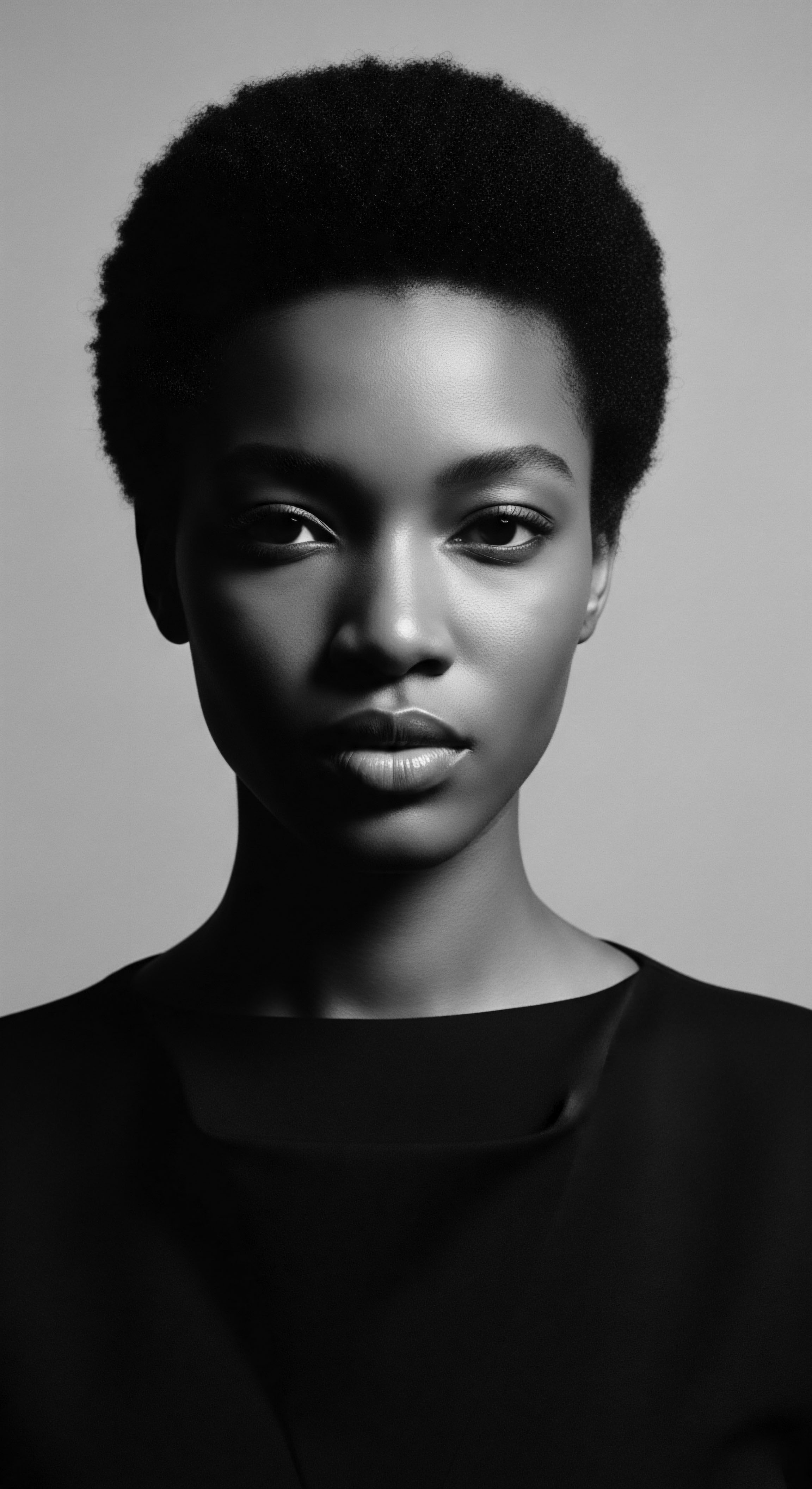
Ethno-Cosmetology and the Hair Fiber
The very act of braiding textured hair, particularly the diverse forms found across Malagasy ethnic groups, showcases an intuitive, generations-deep understanding of hair fiber mechanics. The inherent coil and curl patterns of various Malagasy hair types—ranging from wavy to tightly curled or “Ngita”—are not obstacles, but rather foundational elements upon which these elaborate structures are built. The tensile strength, elasticity, and hygroscopic properties of naturally textured hair allow for the creation of styles that hold their form, resist environmental stressors, and protect the scalp, all without the aid of modern chemical treatments. This practice can be seen as an ancient form of bio-mimicry, leveraging the hair’s natural architecture for functional and symbolic purposes.
One might consider the application of traditional oils and botanical concoctions—often derived from indigenous Malagasy flora—during the braiding process. While direct scientific studies on the specific botanical ingredients used historically in Malagasy hair care are not extensively publicized in international academic databases, analogous practices across other African and Afro-diasporic communities point to an empirical understanding of emollients, humectants, and anti-inflammatory agents. These applications not only nourished the hair and scalp but also likely enhanced the longevity and integrity of the braided styles, demonstrating a nuanced interaction between human ingenuity and environmental resources. The scientific grounding of these traditional practices, though often passed down through oral tradition, finds echoes in contemporary trichology’s understanding of hair health and maintenance.
The Malagasy braid is a complex synthesis of cultural identity and an intuitive science of textured hair, passed through generations.

Sociopolitical Dimensions of Hair
The meaning of Malagasy braiding extends into the sociopolitical landscape, offering a compelling case study of hair as a site of power, resistance, and social stratification. Historically, colonial powers often sought to suppress indigenous cultural expressions, including traditional hairstyles, as a means of imposing Western norms and eroding communal identity. In Madagascar, while specific decrees against braiding are not widely highlighted, the broader colonial agenda undoubtedly influenced perceptions of beauty and self-presentation. The preference for straight hair that emerged in some Malagasy urban centers, influenced by Western beauty standards, reveals a subtle but significant shift in aesthetic values.
Despite such pressures, traditional braiding practices persisted, often becoming a silent act of cultural preservation and a declaration of ancestral pride. The revival movements, such as the “Curly Aho” group initiated in 2017, advocating for the acceptance of natural, curly hair among Malagasy women, stand as modern expressions of this ongoing cultural resilience and a reclaiming of indigenous beauty standards. These movements highlight how hair, even in contemporary contexts, remains a contested terrain where cultural identity is affirmed and celebrated.
The role of hair in defining social hierarchies in pre-colonial Madagascar also provides rich academic ground. The complexity of a hairstyle could indicate not just social status but also a person’s age or ethnic affiliation. This intricate system of visual cues meant that hair served as a public register of an individual’s social position and relationships within the community.
For instance, the traditional hairstyle of the Betsileo, distinct from that of the Sakalava or Merina, visually encoded tribal identity. This demonstrates how the body, specifically hair, became a dynamic canvas for mapping social order and group cohesion, offering a nuanced understanding of identity beyond simple spoken or written markers.
- Mourning Styles ❉ In the Merina ethnic group, the traditional male hairstyle vanished after the death of Queen Rasoherina in 1868, symbolizing a collective response to loss. For women, specific styles like “Tananivoho” were worn during mourning periods, and historically, during royal mourning, the entire population, excluding royalty, would shave their heads. This practice underscores the deep societal connection between hair and collective grief.
- Circumcision Braids ❉ When a young boy undergoes circumcision, it was customary for all women in his family to wear a single braid, emphasizing familial unity and support during a significant rite of passage. This illustrates the performative and symbolic role of hair in ceremonial contexts.
- Social Distinction ❉ Historically, simply by observing a man’s hairstyle, one could discern his ethnic group among the Betsimisaraka. This demonstrates how hair functioned as a clear marker of social and tribal distinction.
The academic examination of Malagasy Braiding, therefore, moves beyond a mere description of styles to an exploration of its underlying social, political, and cultural grammar. The resilience of these practices, even after centuries of external influence, speaks to the profound ancestral wisdom embedded within them and their continued relevance for self-expression and cultural affirmation in the contemporary world.

Reflection on the Heritage of Malagasy Braiding
The journey through the intricate world of Malagasy Braiding invites a contemplation of heritage as a living, breathing entity, not a static relic of the past. The echoes of ancestral wisdom, carried within each precisely parted section and meticulously formed coil, remind us that hair is more than keratin and pigment; it is a sacred conduit to lineage. For those of textured hair heritage, particularly within Black and mixed-race communities, the Malagasy Braiding stands as a poignant reminder of the ingenuity, resilience, and profound artistry that has characterized hair care and adornment across generations. It compels us to consider how our own hair experiences are interwoven with a global narrative of cultural persistence, of beauty found and reclaimed.
To witness the enduring practice of Malagasy Braiding is to feel the warmth of ancestral hands, tracing patterns of belonging and selfhood. It is a testament to how traditions, lovingly tended, continue to speak to the soul, offering a profound sense of rootedness in an ever-shifting world. The story of Malagasy Braiding, in its meticulous detail and its expansive meanings, invites a deeper appreciation for the boundless wisdom inherent in traditional forms of care, urging us to listen to the whispers of the past, allowing them to inform and enrich our present hair journeys. It reminds us that every strand holds a story, a connection to a heritage that is both deeply personal and universally resonant.
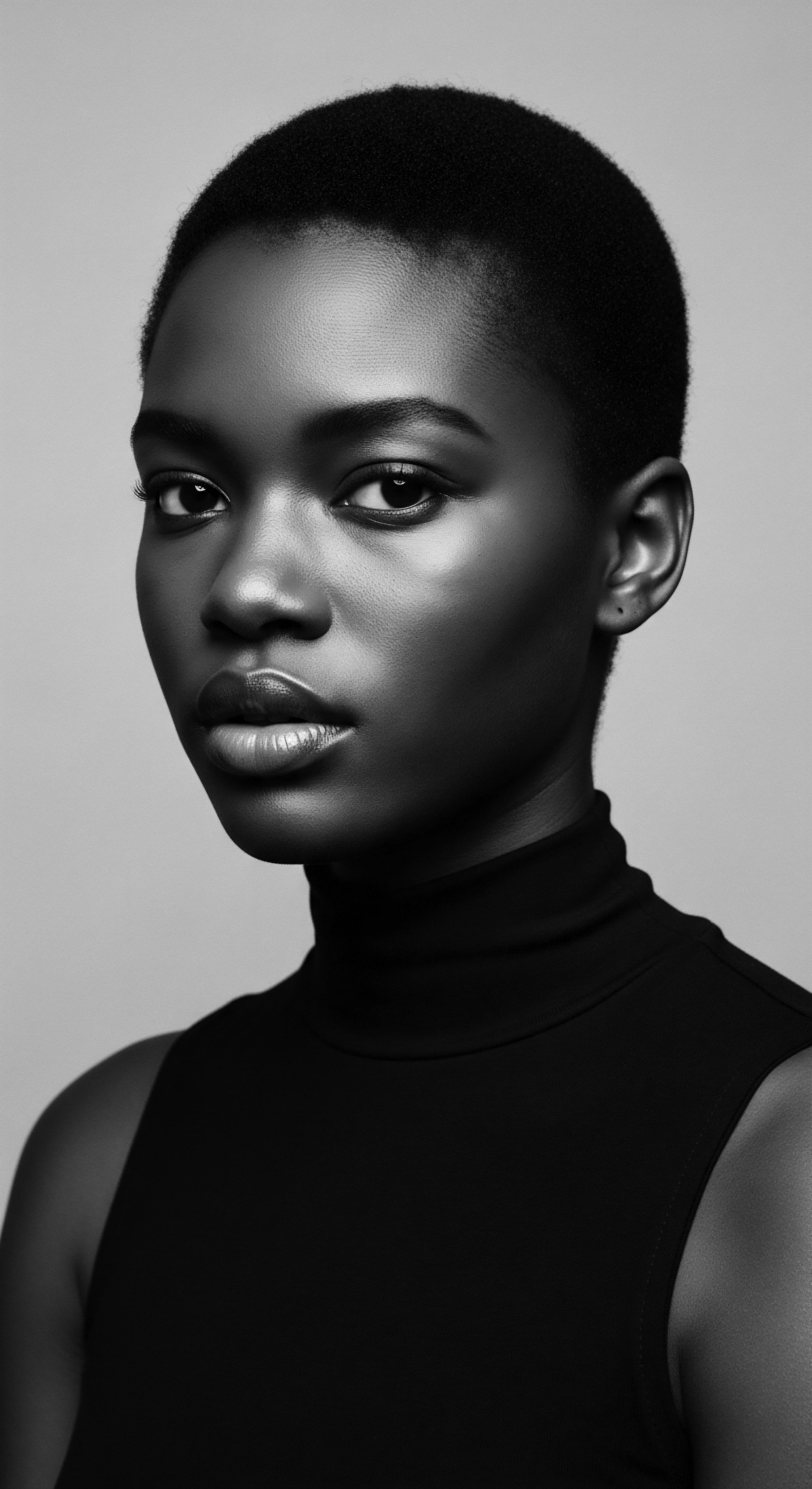
References
- Kollar, Z. (n.d.). Human hair history. Zsofia Kollar. Retrieved June 1, 2025, from https://www.zsofiakollar.com/blog/human-hair-history
- Middleton, K. (Ed.). (2001). Ancestors, Power, and History in Madagascar. Brill.
- Randriamaniraka, M. (2000). L’extraordinaire et le quotidien. Éditions Karthala.
- Regnier, P. & Somda, J. (n.d.). Slavery in Madagascar ❉ A historical overview and current implications. Project on Middle East Political Science. Retrieved June 1, 2025, from https://pomeps.org/2018/11/12/slavery-in-madagascar-a-historical-overview-and-current-implications/
- Renel, C. (1910). Contes de Madagascar (Vol. I). E. Leroux.
- The Good Girlfriend. (n.d.). The Malagasy Braid and Its Meanings. Retrieved June 1, 2025, from https://www.thegoodgirlfriend.com/the-malagasy-braid-and-its-meanings/
